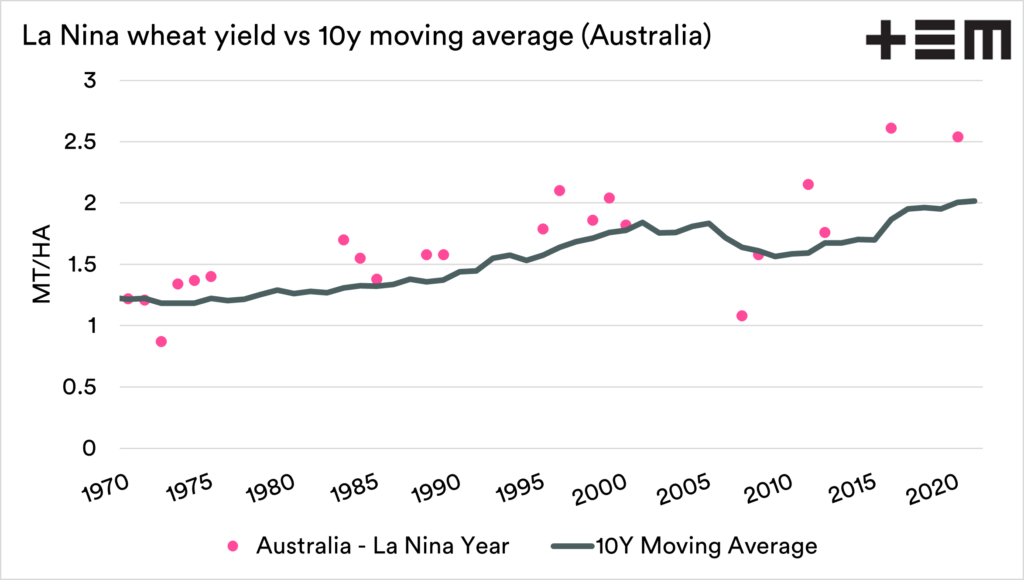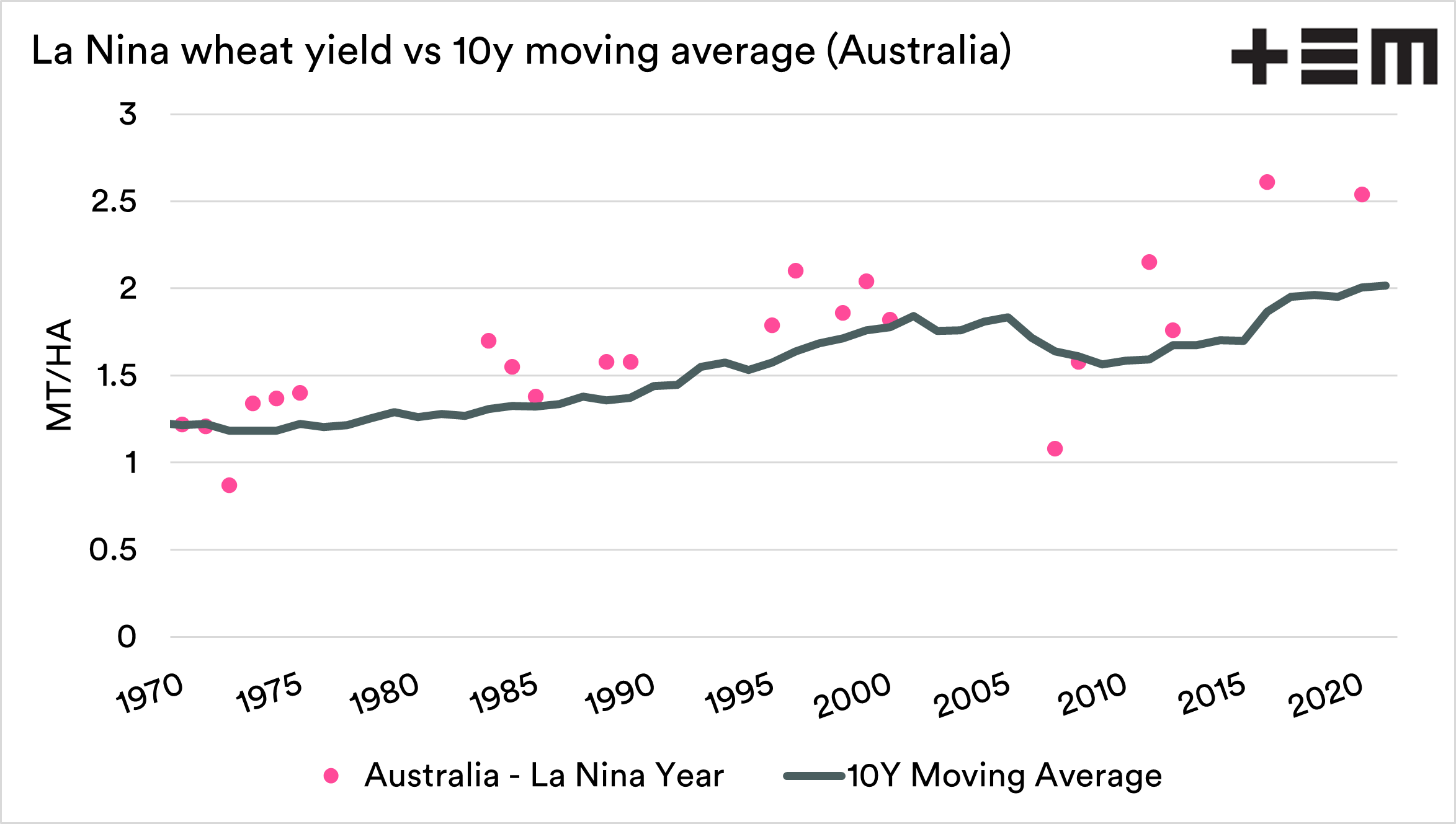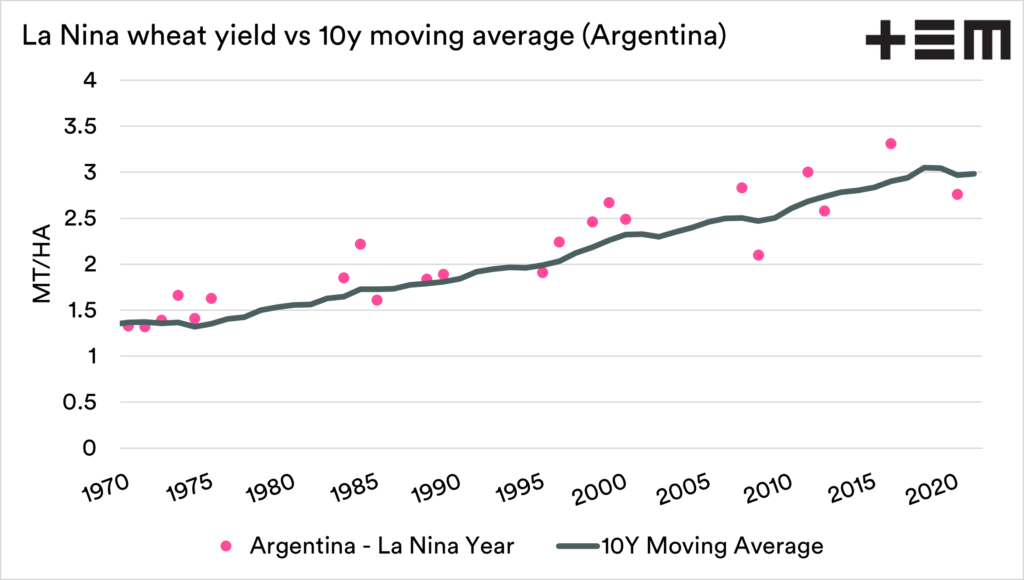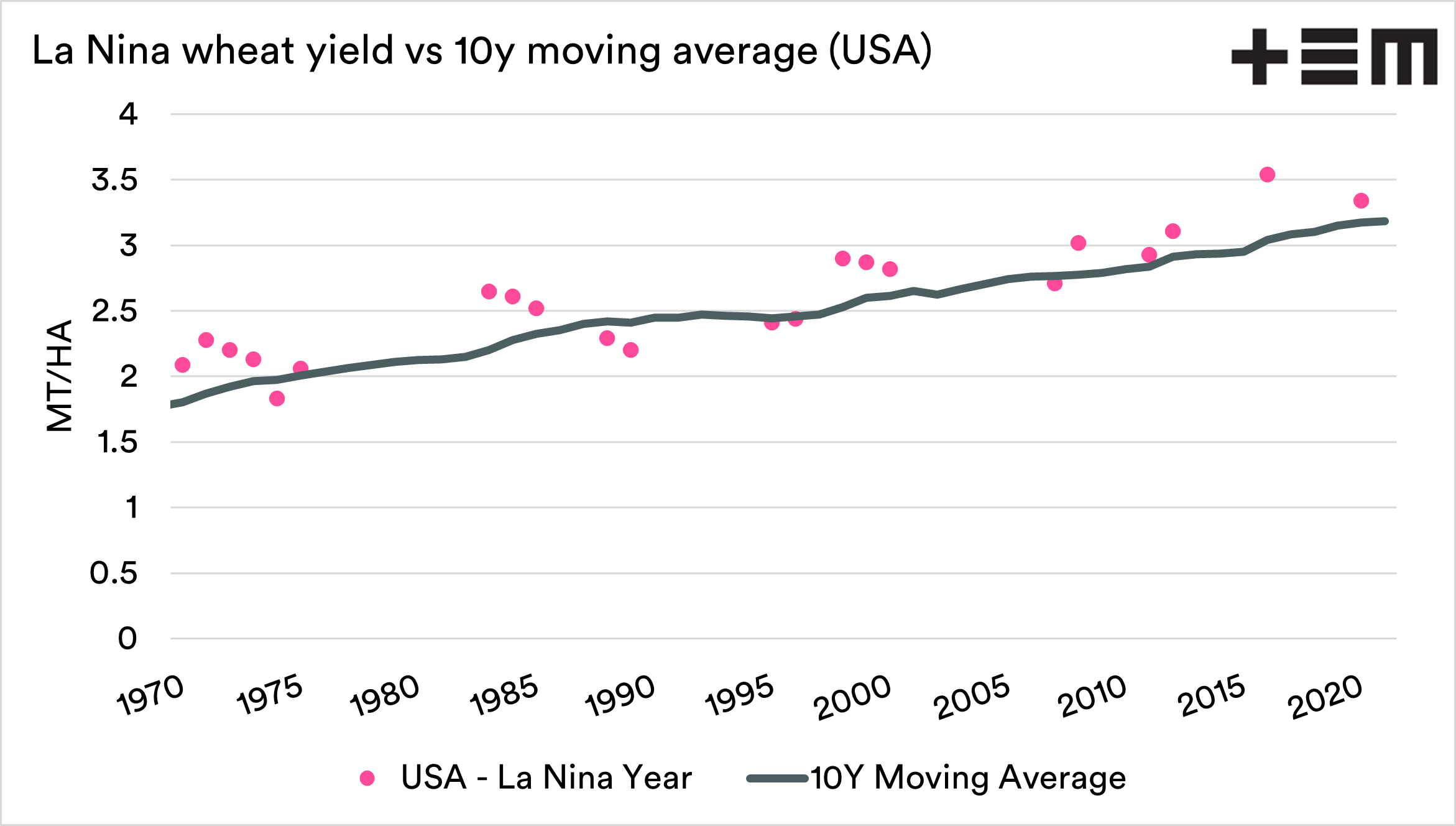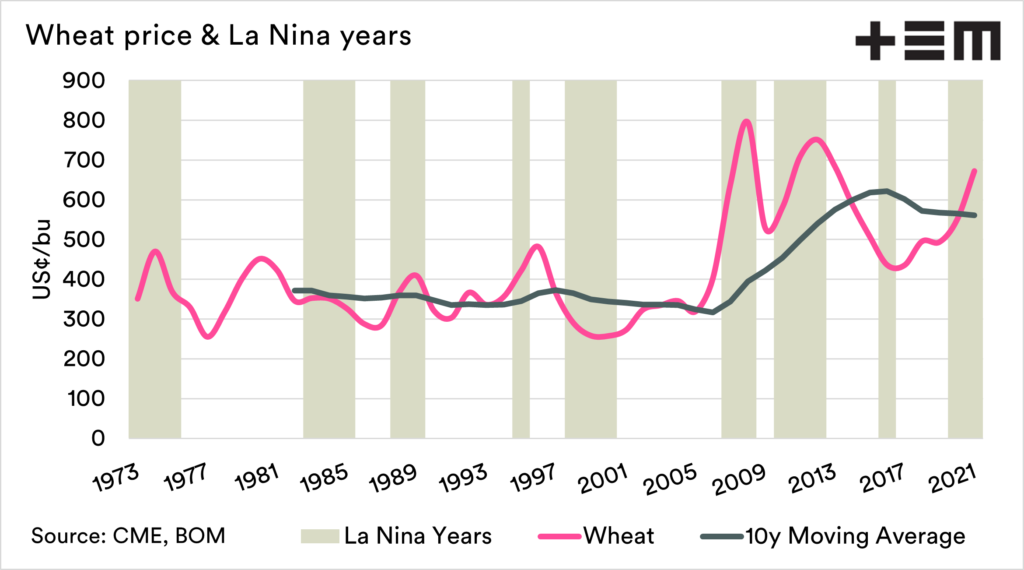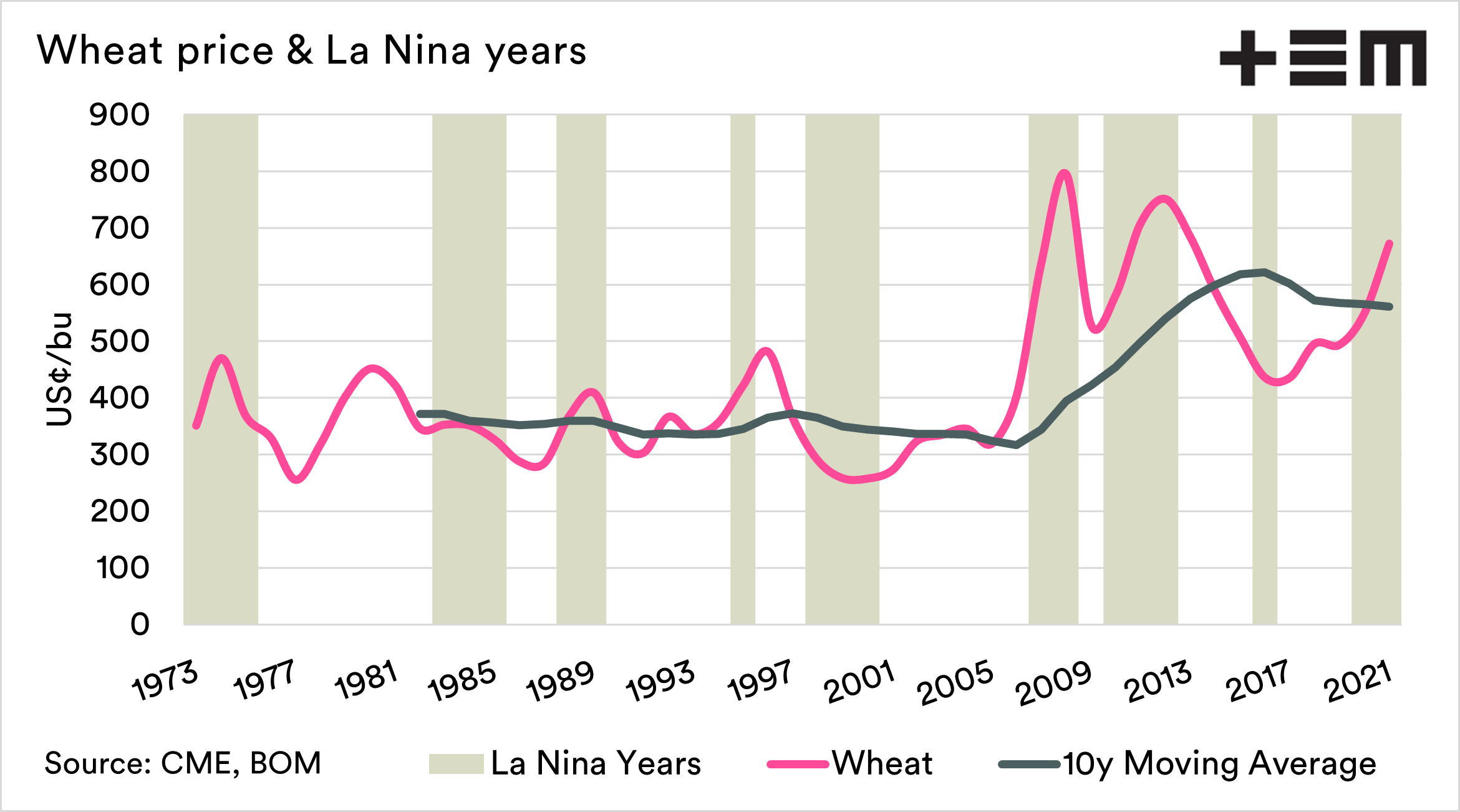La Nina makes it moist – no kidding!

The Snapshot
- There are some calling for a La Nina to form in the coming months.
- A La Nina can make it wet in Eastern Australia.
- The US and parts of South America (esp Argentina) can get dry.
- Australian yields have typically been higher than average during La Nina periods.
- Argentina has been 50/50 between negative and positive impact.
- The US has generally been positive around La Nina.
- There is some pattern of pricing levels being higher during or around La Nina events.
- Let’s hope it doesn’t mean a wet harvest!
The Detail
The BOM have announced that we are now officially in a La Nina phase. A period that can bring wet weather to Australia (yeah, no kidding!).
The La Nina is known to bring wet weather to Australia (see map); at the same time, it can make conditions in the US and South America dryer. I thought it was time to update some of the articles I wrote last year to get an idea of the potential impact.
The chart below shows the years where La Nina weather patterns were present, displayed against Australia’s ten-year moving average yield. As we can see, more often than not, yields have been higher than the ten-year average when La Nina has been active.
What about other parts of the world?
The picture is not quite as clear when we look at the overseas crops in the USA and Argentina, which typically should be dryer.
The charts below show the same as the above, but for Argentina and the United States. In Argentina since 2000, the La Nina has corresponded with three years of higher yields and three years of lower yields.
In the US, wheat yields have generally been positively impacted since 2000, except for two years.
It’s important to note that La Nina does tend to create moist and dry patches around the world, but they don’t necessarily fall at the time, which will correspond with impacting upon the crop.
What about pricing?
The chart below shows the annual price for wheat; again, these show the price against the 10y moving average. The price used is the nominal price, and does not take into account inflation. This isn’t required, as the purpose is to look at the peaks in pricing versus the 10-year average.
There is a slight pattern where peak pricing has occurred around La Nina years. In wheat, we can see higher pricing in 6 out of 9 of the La Nina periods since the 1970s. At present, we have just come out of a La Nina and have the possibility of another emerging. We can see that our pricing is substantially above the ten-year average during the current period.
What does it all mean?
A La Nina is definitely positive for Australia, especially the east coast. At the same time, it can be negative for other production areas.
Positive production in Australia, and negative production overseas is a factor driving our pricing higher at the moment. A La Nina has the potential to produce this type of scenario.
There are several factors that will contribute to any impact of La Nina:
- Timing of the La Nina. To have an impact it has to coincide with key growing periods.
- The severity of the La Nina
- Length of the La Nina
- La Nina interaction with other weather patterns such as the Indian Ocean Dipole
At the moment, there is not a consensus that a La Nina will for, and therefore any impact is speculative. It is one to keep an eye out for, especially if it causes a wet harvest.
If you liked reading this article and you haven’t already done so, make sure to sign up to the free Episode3 email update here. You will get notified when there are new analysis pieces available and you won’t be bothered for any other reason, we promise. If you like our offering please remember to share it with your network too – the more the merrier.
Please note this article is largely a repost of our early September, which we published when the US weather service increased likelihood of a La Nina. We thought that it was appropriate to report, due to the announcement from BOM.
To read about different effects of La Nina, follow the links below:
- La Nina – A look outside our bubble
- La Nina to bring the rain?
- Don’t forget about WA
- La Nina-cation Breakdown

